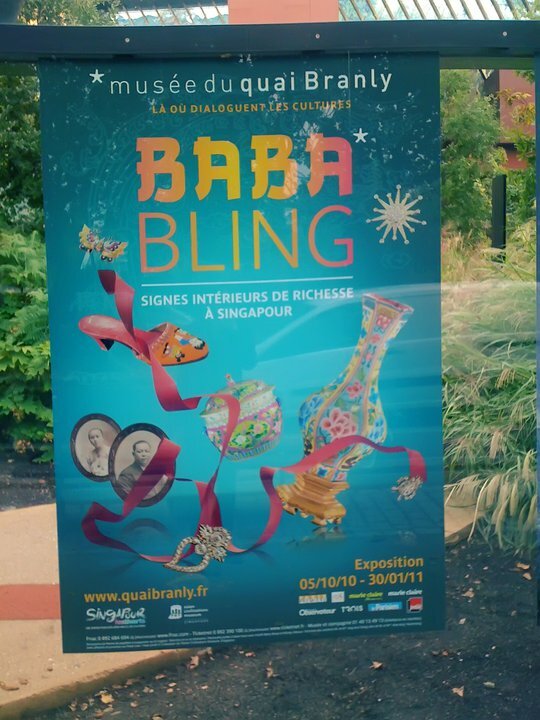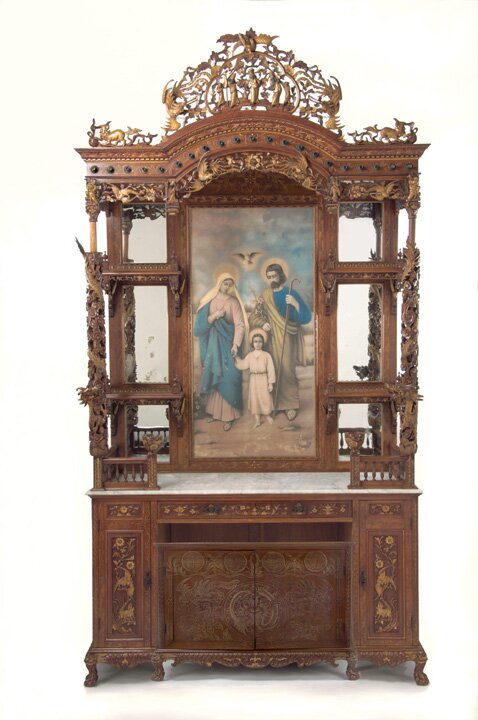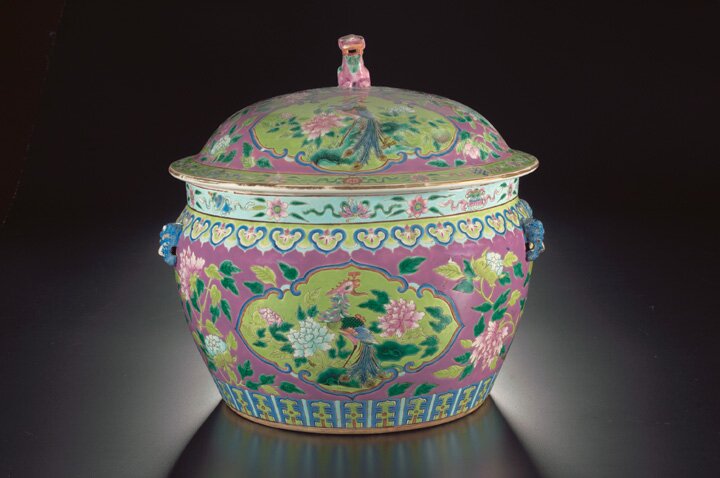Peranakans in Paris
Babas and nyonyas everywhere should throw a tok panjang feast to celebrate their debut in the capital of fashion.

Christian Lacroix has Baba taste. (Exhibition set design by Christian Lacroix ©Centre National du Costume de Scène, France and Christian Lacroix.)
Come October, something remarkable will happen in the land of Yves St Laurent and Christian Lacroix. Five hundred Peranakan costumes and artefacts will have the spotlight thrown on them within a stone’s throw of the Eiffel Tower. The exhibition called Baba Bling will be spending three months in the fashion capital of the world.
The French have always been keen on borrowing elements of Oriental culture: Japanese screens were all the rage during the Art Deco era and amongst French couturiers, Yves St Laurent in particular often celebrated the Asian aesthetic. I strongly feel that Lacroix’s love of the theatrical and the opulent rivals that of the Peranakans. Last year I explored every square centimetre of his exhibition in Singapore, the first of a 10-year collaboration between Singapore and France. It was a spectacle of sumptuousness. I often wear Christian Lacroix scarves with sarung kebaya because the motifs and colours are similar.
Other elements of my culture will be on display and I wait with bated breath for pictures to be sent from Paris of the presentation. Of particular interest is the family altar which traces the conversion of the family from Daoism to Christianity. The precious porcelain with their peonies and phoenixes will surely enchant the Parisians.

Larger than life baba and nyonya at the entrance to the Musee du Quai Branly.
Photo credit: Thanh Nam Hee

This is the first time that the Musee du Quai Branly, a national museum of France with a world-renowned collection of artefacts from the non-western cultures of the world, is presenting a showcase of Peranakan culture. It is also the first time that Singapore’s Asian Civilisations Museum is presenting an exhibition in one of the major museums in Europe.
The French President Nicolas Sarkozy and Singapore’s Prime Minister, Lee Hsien Loong, are patrons of the exhibition. Mr Lee is Peranakan. The exhibition opens on October 5.
My ancestors would be so pleased. If they were alive, they would probably don their best Peranakan attire and throw a tok panjang feast which is reserved for huge celebrations such as weddings.
Peranakan culture is a marriage of cultures, after all.
Mr Yves le Fur, director of the heritage and collections department in the MBQ said the aim of the museum is the dialogue of cultures and "the culture and the history of the Peranakans emerged as a true and singular illustration of this dialogue."
"The Baba objects are a good way to approach Asian artefacts and their influences. It's also a beautiful occasion to discover a lesser-known culture and to attract the French public to the fantastic world of Singapore."
The exhibition will spend winter in Paris and leave on January 30.
I hope this Singapore-French romance will continue to bear fruit long after that.
Who knows what the Peranakans will inspire the French to create?

Turquoise kebaya (tunic) with ribbon and floral motifs
Straits Settlements 1950s-1960s
Gift of Ms Anne Soh Gwek Shin in memory of Mdm Koh Suat Neo, 2007
(Courtesy of Asian Civilisations Museum Singapore)

Pink kebaya with squirrel and coconut tree motifs
Straits Settlements 1950s-1960s (Courtesy of Asian Civilisations Museum Singapore)

Catholic altar sideboard (Courtesy of Peranakan Museum, Singapore)
This sideboard altar visually tells the story of a Peranakan Chinese family’s conversion from traditional Chinese religion to Roman Catholicism. It is carved with Daoist figures and Chinese auspicious motifs such as dragons and phoenixes. After the family’s conversion, a painting of the Holy Family was added. In the early 20th century many Peranakans converted to Christianity, possibly as a result of attending mission schools.

Pink ground kamcheng with phoenix and peony motifs (Courtesy of Peranakan Museum, Singapore)


















